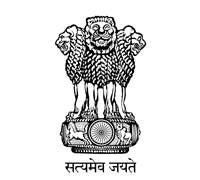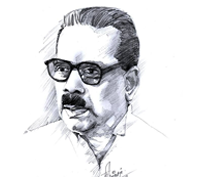Book Details
BACK|
Title |
PARIPĀṬAL : Text, Transliteration, Translations in English Verse and Prose |
|
Author |
Compiled and Edited by Nirmal Selvamony;K. G. Seshadri, V. Murugan, A. K. Ramanujan, John Ralston Marr, and P. Pandian [Tr.] |
|
Publisher |
Chennai: Central Institute of Classical Tamil |
|
Publish Year |
2022 |
|
Language |
English |
|
Book ISBN |
978-93-81744-85-7 (HB) |
|
Number of Pages |
348 |
|
Book Price |
Rs.600.00 |
|
About the Book:- |
Paripatal, one of the celebrated eight anthologies of the Cańkam period, contains twenty-four poems and a few fragments in a meter called Paripāțal, the length of each poem varying from 32 to 140 lines. The pieces on Murukan and Tirumal are considered to be "the earliest bhakti poems in India, the earliest religious poems in a mother tongue" (Ramanujan 310). It is also widely believed that Kalittokai and Paripāțal are the latest of the eight anthologies while Kuruntokai and Puranānūru include the earliest poems. Paripățal is the only text among either Ettutokai or Pattuppăţţu which gives the name of the musical mode in which it has to be sung and also the name of the composer. In his edition of ilampūraņar's commentary of Ceyyuliyal of Tolkäppiyam, Atikaļāciriyar clarifies the meaning each of the commentators had attributed to the term Paripāțal. To llampūraņar, the term pari meant, "successive." It is not a genre made up of a single verse form like veņpā, but one in which several limbs occur successively (213). To Pērāciriyar, the term, "pari", meant "mixed." Of the six songs attributed to Mal (1-4, 13, 15), not even one mentions the name Tirumal nor do any in Ettutokai and Pattuppăţţu. Scholars have pointed out that Paripāțal songs treat both akam and puram matters. If the poems on vaiyai are predominantly about akam, the other songs about Mäl and Cevvēļ are about akam. It is true that Paripāţal is not wholly based on the akam conventions like the other Cankam works which pertain to akam. Nevertheless, it does involve the hero, heroine, the other woman (who does not enjoy the social approval like her counterpart, kāmakkilatti did in earlier tiņai society), confidante and pāņan. Siegfried Lienhard in his "Tamil literature Conventions and Sanskrit Muktaka Poetry" demonstrates with telling examples how several kavisamayas are of Tamil origin. George L. Hart in his The Poems of Ancient Tamil, their Milieu, and their Sanskrit counterparts came out with striking examples of Kälidāsā's direct and indirect borrowings from Cańkam Poets. A close reading of Kumārasambhavam in the light of Cańkam works will force us to conclude that it was not a case of indirect influence through Maharastri Prakrit or even of a nodding acquaintance with ancient Tamil poetry but of a profound impact of some of the early as well as late Cańkam writings though we may never know how this happened. Tirumurukärruppatai and Paripăţal seem to have served as exemplary sources of inspiration for Kumārasambhavam for which there is no known Sanskrit model. |













